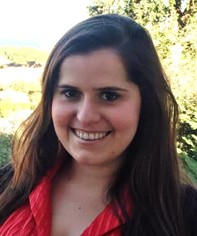Rossella Castagna |
|
|
Rossella Castagna received her bachelor (2008) and master degree (2009) in Materials Engineering at the Politecnico di Milano, Italy. In 2010, she joined the Center for Nano Science and Technology (CNST) of the Istituto Italiano di Tecnologia, pursuing a Ph.D. in Materials Engineering at the Politecnico di Milano under the supervision of Prof. Chiara Bertarelli. Her Ph.D. thesis (2013) focused on the design, synthesis and characterization of photochromic materials, and on the development of smart devices for optical, optoelectronic and nanotechnological applications. |
 |
Group: Nanoprobes and NanoswitchesSupervisor: Pau Gorostiza |
|
Project: Targeted Covalent Photoswitches for Vision Restoration in Degenerated RetinaRetinal diseases are characterized by a pathologic degeneration of the light-sensitive rod and cone photoreceptor cells that eventually results in blindness. However, even in the complete absence of photoreceptors, the inner retinal neural circuits persist until late stages of the degenerative process, which led the idea of therapeutically targeting the remaining retinal wiring. In this project, a strategy to photoswitch the protein activity with a covalent attachment to the target protein without a genetic manipulation is proposed. This approach is based on a class of target covalent photoswithces (TCPs) that, in analogy to the mechanism of targeted covalent drugs, is driven to the protein of interest by its binding affinity. This photopharmacology strategy relies on synthetic light-regulated bioactive ligands which are temporary, instead of irreversible genetic modification or invasive surgery of the retina. This reversibility reduces the risks of permanent damage if serious immune response occurs and allow adjust the dose of the drug according to the progression of the disease. Starting from promising results obtained in the group of Prof. Gorostiza in photopharmacology, this project aims to develop TCPs into a therapeutics or research drugs. By a proper molecular design, we can tailor their optical properties, reactivity and pharmacological properties to achieve prosthetic molecules (or nanoprostheses) to remotely drive the endogenous receptors that remain in the cells to be treated. |
|
